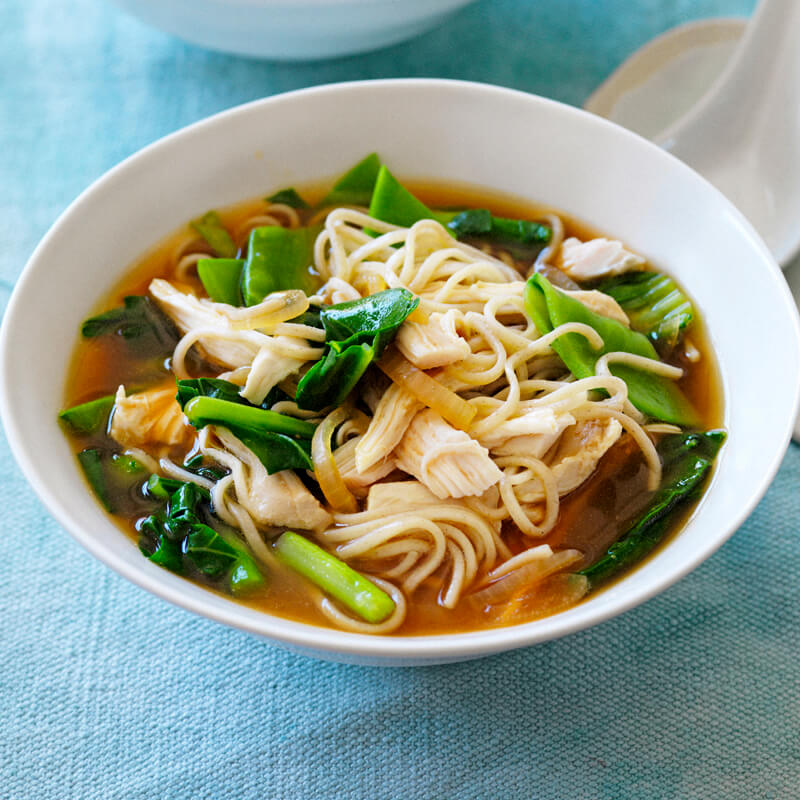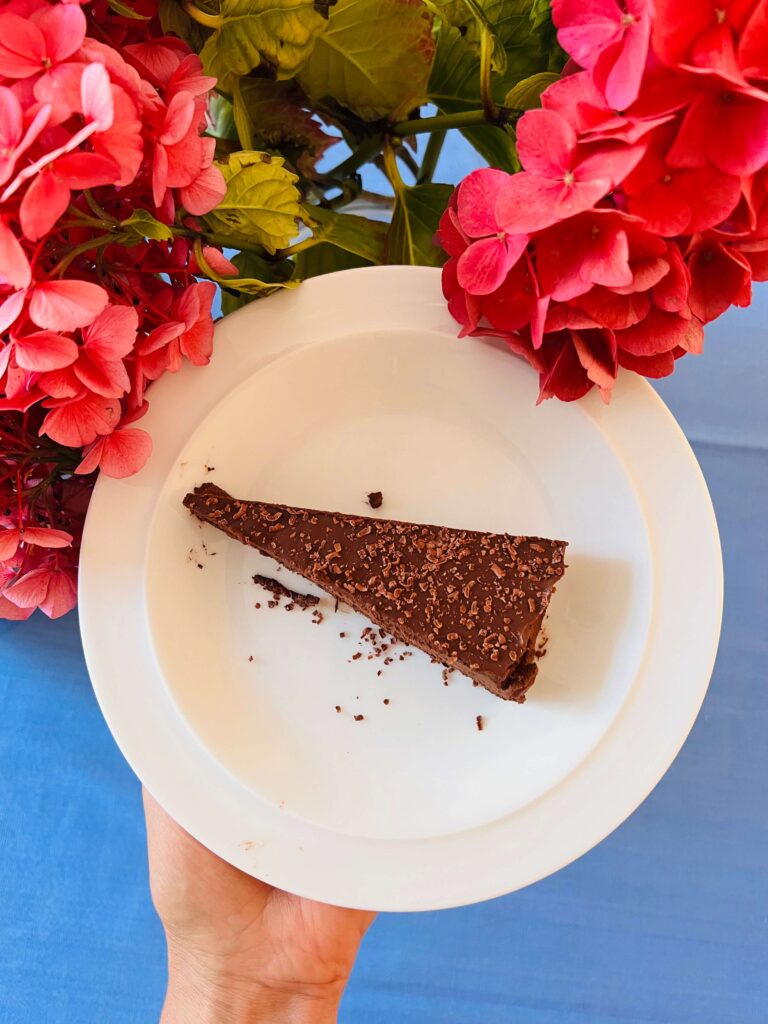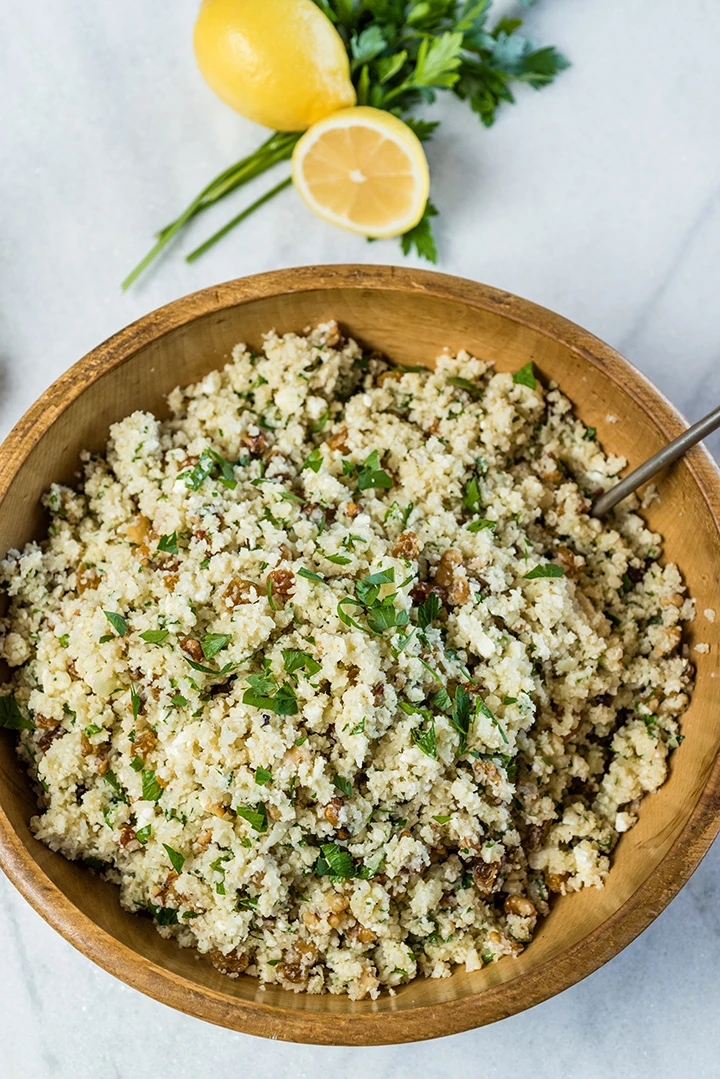Miso means ‘fermented beans’ in Japanese. In Japan, people begin their day with a bowl of miso soup, believed to stimulate digestion and energise the body. A traditional ingredient in Japanese and Chinese diets, miso paste is made from fermented soybeans and grains and contains millions of beneficial bacteria. There are hundreds of different types of miso and different versions are linked with regional cuisines, identities and flavours. The protein-rich paste is highly popular as it provides an instant flavour foundation. It adds the fifth taste, known as ‘umami’, to all sorts of dishes including soups/broths, salad dressings, vegetables, stews, glazes, and marinades.
Miso is rich in essential minerals and a good source of various B vitamins, vitamins E, K and folic acid. As a fermented food, miso provides the gut with beneficial bacteria that help us to stay healthy, vibrant and happy; good gut health is known to be linked to our overall mental and physical wellness.
SERVINGS: 2
INGREDIENTS:
Extra virgin olive oil
5cm/2in piece fresh root ginger, chopped
3 garlic cloves, crushed
Pinch of crushed chillies
1.7 litres/3 pints boiling water
3 tbsp gluten free miso paste
2 tbsp lime juice
150g gluten free noodles
2 chicken breasts, thinly sliced
125g shiitake mushrooms, sliced
70g baby sweetcorn, chopped
200g sugar-snap peas or green beans, halved
85g baby spinach
1 pak choi, chopped into bite sizes
Soy sauce, sesame seeds and coriander to serve

METHOD:
Heat 1tsp of olive oil a over a medium heat. Add the ginger, garlic and chillies and stir-fry for 1 minute, until soft.
Add 1.7 litres/3 pints boiling water and bring to a simmer. Stir in the miso paste, lime juice and noodles and cook for 1 minute. Add the spinach, cover and set aside.
Season the chicken with pepper, heat a frying pan with olive oil and stir-fry the chicken, mushrooms and sweetcorn for 2-3 minutes. Add the peas and pak choi, cook for 2 minutes, or until the chicken is cooked through.
Transfer the soup to 4 bowls, spoon over the vegetables and chicken. Top with sesame seeds, coriander and serve with soy sauce on the side.
Note: this soup is very versatile and you can use any vegetables you like and substitute the chicken with prawns or tofu.
How to select and store
When buying miso, choose the unpasteurised, live, enzyme-rich product that will need to be stored in the fridge. This type is loaded with beneficial microorganisms. After opening, the texture, colour and flavour may change so keep an eye on it. Some can be kept for quite a long time without any concerns or variations to quality.
Most miso pastes contain gluten (wheat, barley and rye) but there are ones made without. I like Clearsprings Brown Rice Miso Paste and they also have a great range of gluten free noodles as well as another brand I like Terra Sana Noodles
White Miso (Shiro Miso)
What it is: White miso (which is actually light yellow in colour) is made with fermented soy beans and rice. It’s fermented for a short period of time, which makes it more mild and sweet in taste. Since it’s the most mild kind of miso, it’s also the most versatile. If you’re buying only one miso to use in a bunch of recipes, this is the best choice.
What it’s good for: Dressings, soups and light marinades.
Yellow Miso (Shinshu Miso)
What it is: Yellow miso is often made with fermented soybeans and barley. It’s slightly stronger than white miso, but not as strong as red. Just remember: Mellow yellow. It’s light brown in colour.
What it’s good for: Dressings, soups, marinades, glazes.
Red/Brown Miso (Aka Miso)
What it is: Red miso is the saltiest, most pungent variety. You only need a little bit to add some serious umami to your dishes. It’s typically made with fermented soybeans and barley or another grain. It ranges from dark brown to red in colour.
What it’s good for: Marinades and glazes for heartier dishes, like meats and certain vegetables, such as eggplant.
You can use the first two varieties interchangeably, but if you find the exact kind your recipe calls for, go for it. If you’re stuck with red/brown and want to use it in a recipe that calls for white or yellow, start using a little less and work your way up to desired taste. I mainly use the darker variety as I like the taste and as it is fermented longer then the other lighter variations.





